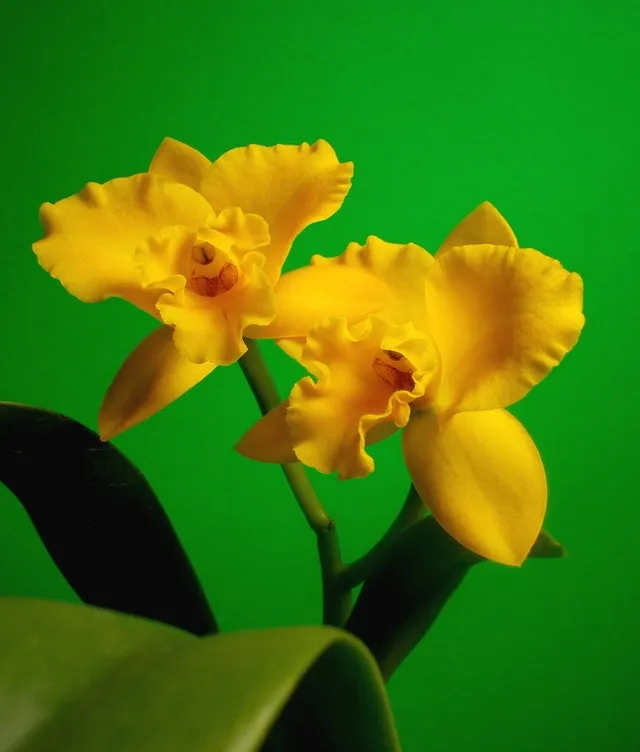¡Feliz día Damas de Hive!
Mi invitación para: @mariavargas
Esta semana participo con la pregunta número 2:
¿Cuál es la historia detrás de tu nombre de usuario Hive?

Mi amiga @popurri me introdujo en el “Mundo Hive” y, me sugirió que buscara un nombre que me gustara y que me identificara. Yo siempre disfruto observando las flores, por lo que decidí inspirarme en las orquídeas del género Cattleya, para generar mi nombre de usuario, @katleya.
Adicionalmente, me recordé de cuando tenía esas bellas matas.
Ahora les cuento algo sobre ellas:
Las familias se componen de géneros y especies. Cada una tiene diferentes características pero, mantienen siempre las “cualidades” del nexo familiar.
La familia de las orquídeas es quizás, la que tiene mayor número de especies a nivel mundial. Las podemos encontrar desde los climas tropicales hasta los templados. Las temperaturas optimas para su cultivo oscilan entre 10ºC y 30ºC. Pueden crecer desde el nivel del mar hasta casi 5000 metros sobre el nivel del mar; en casi todos los hábitats excepto en el agua y en el desierto. Pueden ser epífitas (viven sobre otras plantas sin causar daño) y terrestres.
Estas plantas se componen de una estructura llamada rizoma, en ocasiones se parece a una cebolla, de donde salen las raíces. Las hojas presentan forma y consistencia variada: desde una elipse hasta hojas alargadas y, pueden tener hojas pulposas. Las flores pueden estar solas o presentarse, en grupos, como un racimo. Su apariencia es muy diferente a otras flores.
La flor de orquídea consta de 3 pétalos, el inferior es más pequeño, se llama labelo, tiene una forma y color diferente al del resto de la flor. Después que la flor se marchita y seca puedes observar una cápsula, es el fruto de la orquídea.
Para cultivarlas te sugiero que las expongas al sol en la mañana temprano y en la tarde, que es más suave. El sol de mediodía las podría quemar. También las puedes colocar sobre árboles, así se filtrará la luz del sol. Las puedes regar con agua para mantener una humedad adecuada y, así no se deshidratan. También tienes que estar pendiente de su salud. Puede presentar manchas, en sus hojas, que las afean. Lo más probable es que sean hongos. En ese caso te sugiero que consultes un especialista.
En internet, la doctora de las plantas, tiene una página en Instagram (https://www.instagram.com/ladoctoradelasplantas/) donde da consejos sobre cómo cuidar a las orquídeas.
Espero que te haya gustado este post. ¡Gracias por leerme!

ENGISH VERSION
Happy day Ladies of Hive!
Invite to:
@mariavargas
This week I'm participating with question number 2:
What is the story behind your Hive username?
My friend @popurri introduced me to the "Hive World" and, she suggested that I look for a name that I like and that identifies me. I always enjoy looking at flowers, so I decided to be inspired by orchids of the genus Cattleya, to generate my username, @katleya.
Additionally, I remembered when I had those beautiful bushes.
Now I'll tell you something about them:

Families are composed of genera and species. Each one has different characteristics but, they always maintain the "qualities" of the family nexus.
The orchid family is perhaps the one with the largest number of species worldwide. They can be found from tropical to temperate climates. The optimum temperatures for their cultivation range between 10ºC and 30ºC. They can grow from sea level to almost 5000 meters above sea level; in almost all habitats except water and desert. They can be epiphytic (living on other plants without causing damage) and terrestrial.
These plants are composed of a structure called rhizome, sometimes resembling an onion, from which the roots grow. The leaves vary in shape and consistency: from elliptical to elongated leaves and may have pulpy leaves. The flowers can be single or present, in groups, as a cluster. Their appearance is very different from other flowers.
The orchid flower consists of 3 petals, the lower one is smaller, it is called labellum, it has a different shape and color than the rest of the flower. After the flower fades and dries you can see a capsule, it is the fruit of the orchid.
To grow them I suggest you expose them to early morning and late afternoon sun, which is milder. The midday sun could burn them. You can also place them on trees, so the sunlight will filter through. You can water them with water to maintain adequate humidity so they do not dehydrate.
You also have to keep an eye on their health. They may have spots on their leaves that make them look unattractive. Most likely they are fungi. In that case I suggest you consult a specialist.
On the internet, the plant doctor has a page on Instagram (https://www.instagram.com/ladoctoradelasplantas/) where she gives advice on how to care for orchids.
I hope you liked this post, thanks for reading!